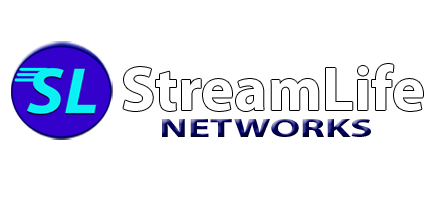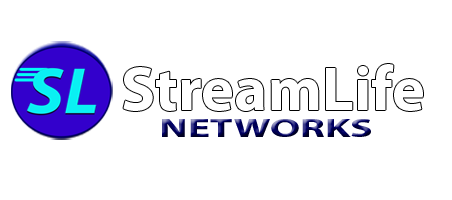How To Get Local Channels With Starlink (2024)
- by admin
- in Television
- on February 9, 2024

More and more people are cutting the cord. Thanks to Starlink, people can now enjoy all kinds of media in high resolution.
In this article, I will detail how Starlink differs from satellite TV, how you can access (local) TV channels, and what hardware is best for watching TV.
Starlink vs. Satellite Television: What’s The Difference?
Satellite TV and satellite-based internet like Starlink are both services that use satellites orbiting the Earth to deliver content, but they serve different purposes and operate differently.
Satellite TV typically uses geostationary satellites, which are positioned at an altitude of approximately 36,000 km (~ 22,369 miles) above the Earth’s equator.
These satellites maintain a fixed position relative to the Earth, so they can continuously transmit signals to a specific region.
Meanwhile, Starlink takes advantage of a low-earth orbit (LEO) constellation, which is comprised of thousands of satellites.
Those satellites are in constant movement while being operating at an altitude of around 550 km (~ 341 miles).
Furthermore, they operate on different portions of the radio frequency spectrum to avoid interference.
Satellite TV operators primarily use the C-band (4 to 8 GHz), Ku-band (12 to 18 GHz), and Ka-band (26.5 to 40 GHz) frequency ranges.
On the other hand, Starlink typically utilizes the Ka-band (26.5 to 40 GHz) and the V-band (40 to 75 GHz) frequency ranges.
While there is some overlap in the frequency bands used by satellite TV and satellite internet services (e.g., Ka-band), they are generally allocated distinct portions of the spectrum to avoid interference and ensure the efficient delivery of their respective services.
Lastly, the equipment that’s being used is different as well. With satellite TV, you normally need a satellite dish, a set-top box or receiver, and a television set.
Conversely, Starlink provides a phased-array antenna (often called a “user terminal”, “dish”, or “dishy”) and a router to connect their devices to the internet.
How To Watch (Local) TV With Starlink
Now that we’ve established how the two are different from each other, let’s take a closer look at the available options.
First and foremost, you simply could stick to your existing satellite TV provider if you haven’t cut the cord yet. In the United States, for example, most people are subscribed to Direct TV.
Direct TV ranges from $64.99 to $154.99 per month, depending on the type of package you pick. Generally speaking, the costlier it gets, the more TV channels you can access.

Luckily, since Starlink offers fast and unlimited data, you can now also stream content – even in 4K or even 8K.
As a result, your content consumption needs could simply be satisfied by subscribing to streaming services like Netflix, HBO, Hulu, Amazon Prime, Apple TV+, and so forth.
And even live television and sports can now easily be accessed over the Internet. YouTube TV, for example, gives you access to 100+ channels for $72.99 a month.
YouTube TV’s biggest advantage over many of its competitors is that you’ll get access to local live TV channels at very competitive prices thanks to Alphabet/Google subsiding the licensing costs.
Other streaming platforms, like Fubo TV, Hulu, Sling, Philo, and even Direct TV, provide similar over-the-top (OTT) services. However, not all of them are capable of displaying local live TV.
The only aspect to keep in mind when it comes to live streaming is outages. The signals that your Starlink hardware emits, much like with satellite TV, can be interrupted by poor weather such as heavy rain or solid objects like trees or houses.
However, streaming shouldn’t be affected as much due to buffering (= downloading a certain amount of data before starting to play the content), especially since Starlink’s outages normally just last a few seconds.
Is Starlink Good For Streaming?
Yes, Starlink is very much suitable for streaming content online – whether that’s on Netflix, YouTube, Disney+, or any other video platform.
In fact, comparatively fast download speeds and its low latency are some of Starlink’s biggest advantages.
With that said, there are a few caveats to keep in mind. First of all, the performance you see with Starlink is dependent on a variety of factors, including:
- the plan you’re subscribed to
- if someone else in your household is accessing the internet simulatenously
- your distance to the router
- how congested your local cell is
- the number of satellites and ground stations around you
… and more. For example, I live in Germany where I regularly see download speeds like this:

Streaming 4K content normally requires around 50 Mbps, which means I can consume every video in the best available quality.
However, that’s not necessarily the case for everyone. One of the major reasons why I do continuously experience speeds like these is because I reside in Germany.
Here, there aren’t nearly as many people subscribed to Starlink, so I rarely compete for bandwidth with other users.
That story is somewhat different for those who are located in the United States – by far Starlink’s biggest market.
Over there, users subscribed to Roam/Mobile often share screenshots of Starlink hovering between 10 Mbps to 25 Mbps, which would be sufficient for streaming in 1080p.
Users who are subscribed to Residential can, according to Starlink, expect around 50 Mbps.
One of Starlink’s largest disadvantages, similar to geostationary services like HughesNet and even mobile coverage in crowded areas, is that the bandwidth a satellite has to be shared among users in a given cell/location.
As such, areas where many Starlink users reside oftentimes experience slower speeds. Luckily, with the deployment of additional satellites and ground stations, that problem should eventually be resolved.
Overall, Starlink should already be a great option for video streaming on any modern platform – especially in locations where you’re not competing for bandwidth with too many other people.
What Hardware Should I Use?
Consuming live TV and sports over the internet can be done via a variety of different products, ranging from your laptop all the way to streaming video players.
In that regard, it’s solely up to you and your preferences as well as your budget. These days, most TVs possess internet connectivity and can thus access the likes of YouTube TV.
Alternatively, you can also purchase media streaming devices like Amazon’s Fire TV Stick, Roku, Apple TV, Google’s Chromecast, and many others.
Each of those devices then allows you to download the above-mentioned live TV and streaming applications and directly stream them onto your TV.
If consuming local live TV is of particular importance to you, then I’d recommend getting Google’s Chromecast 4K version and coupling that with YouTube TV.
How To Fix The Playback Error When Streaming Live TV
One prerequisite to accessing local live TV is that you are physically located in the location in which you’re registered.
The local channels are normally checking your IP address’s location, which in Starlink’s case is a dynamically routed IP that is used by a multitude of people.
Those IP addresses are often associated with a Point of Presence (PoP) that is residing at a completely different location, thus making YouTube TV and the likes assume that you’re accessing local channels from a different location than you initially mentioned.
One option to circumvent this issue is to use a VPN, which allows you to route your IP address to a location that’s closer to where you actually reside.
PureVPN, for example, operates over 2,200 servers in North America alone, on top of offering other useful features such as port forwarding.
Luckily, there’s also a free option, which is another reason why I recommend YouTube TV. You can use the YouTube TV app on your phone to register your location via GPS at least once every three months. Here’s a detailed guide on how to do that.
Wrapping Up
In conclusion, Starlink’s high-speed satellite internet offers a variety of ways to access local channels and enjoy a diverse range of media content.
With the right streaming services, hardware, and location-based solutions, users can optimize their Starlink experience for seamless access to their favorite local TV channels.

